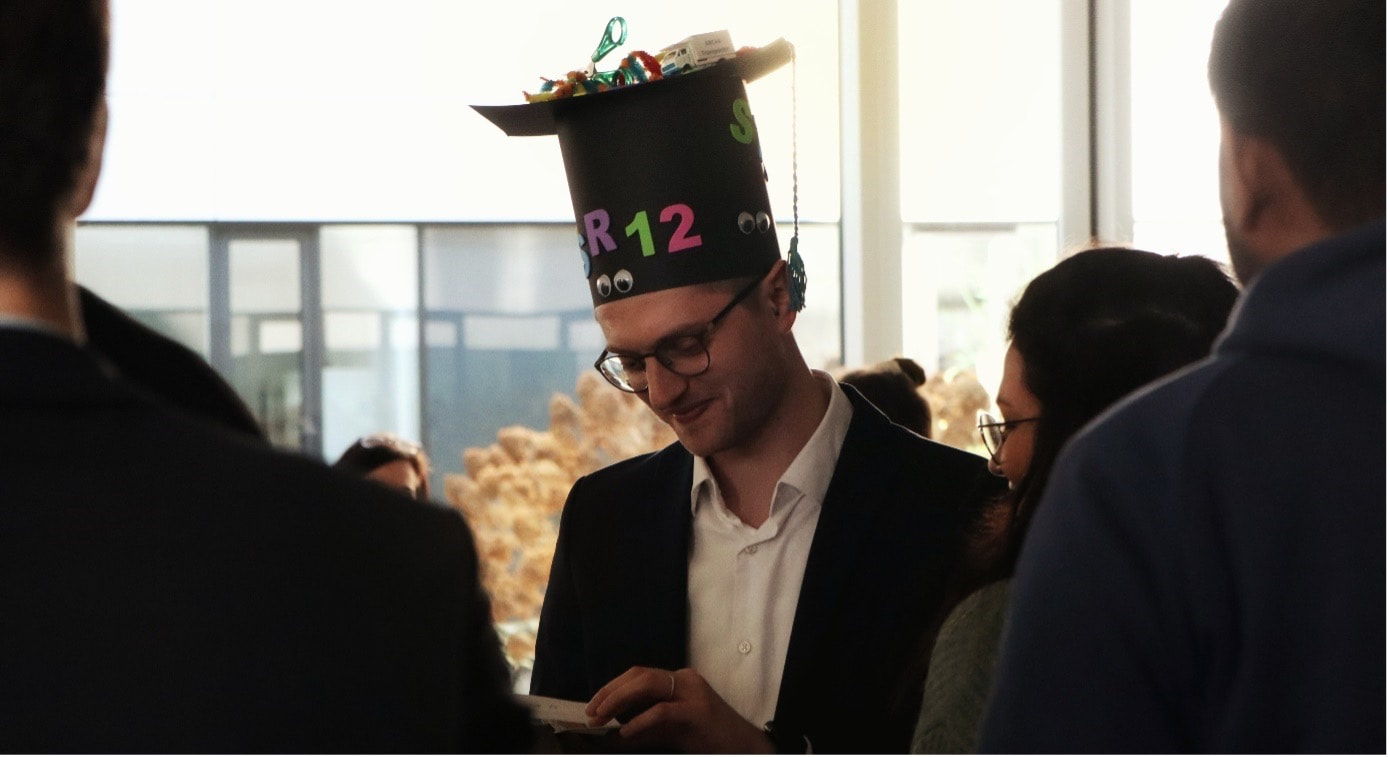ESR12: CRISPR/Cas9 gene editing for excision and resue of deep-intronic mutations in ABCA4
|
Partner
Eberhard Karls University Tubingen, Germany (www.eye-tuebingen.de/wissingerlab) Supervisor Dr. S. Kohl |
Pietro De Angeli
I earned my bachelor's and master's degrees in molecular biotechnology from the University of Urbino, Italy. There, I actively contributed to developing an enzyme-replacement therapy protocol for the rare genetic metabolic disorder known as Guanidinoacetate methyltransferase deficiency. Furthermore, during my master´s studies, I joined Leopold Part's team at the Sanger Institute (UK), where I worked on profiling CRISPR/Cas9-mediated mutational repairs via high-throughput screening. For my PhD within the Marie Curie Innovative Training Network, StarT, I moved to Germany and joined the Institute for Ophthalmic Research at the University Hospital Tübingen. My research focused on developing CRISPR/Cas9 editing strategies to counteract Stargardt disease, with a specific emphasis on pathogenic variants affecting splicing. During this period, I published two papers in a prestigious journal (paper1, paper2), with an additional manuscript currently in preparation. Furthermore, international patent was filed. After receiving my PhD degree on February 8th 2023, thanks to different research fundings obtained from the Deutsche Forschungsgemeinschaft under the priority program 2127, from Usher syndrome society, and from the Kerstan foundation, I am continuing working in the inherited retinal disorder field with the aim to develop gene editing strategies with translational potentials. My 5-year vision? Establishing my own lab while getting closer collaborations with more industries. About the MSCA, this was for me a unique opportunity to become an expert in the field of gene editing with a special focus on inherited retinal disorders. Through this program, I built a robust professional network and had the chance to join different labs across Europe, enhancing my expertise and strengthening my skills in the field. |
Abstract
Deep-intronic mutations represent a considerable fraction of disease alleles in ABCA4-IRD. Since ABCA4 is difficult to target by AAV-based gene supplementation therapy, alternative therapeutic approaches are needed. Here, we propose CRISPR/Cas9 gene editing to target cryptic splice sites and make use of the default non-homologous end joining (NHEJ)-based repair pathway to delete or excise illegitimate exons or the critical splice donor/acceptor sites to eventually rescue normal splicing of transcripts and re-establish normal gene function. The advantages of such an approach are the loosened need for precision in gene editing, the once-forever intervention strategy and the circumvention of all dose-related/overdosing issues in standard approaches. First proof-of-concept of this strategy has been obtained by P3-EKUT in an in vitro assay of an OPA1 deep-intronic mutation. ESR12 will use this strategy to target two clusters of deep-intronic mutations in intron 30 (V4 cluster) and 36 (V1 cluster) of ABCA4 by a duplex CRISPR/Cas9 nuclease or quadruplex sgRNA/Cas9 nickase inducing double-strand breaks up- and downstream of the deep-intronic mutation and resulting in small deletions due to intrinsic NHEJ repair. Efficacy of the approach and its validation will be tested in minigene assays in HEK293 cells and in retinoblastoma Y79 cell clones in which common deep-intronic mutations will be introduced by CRISPR/Cas9 homology-directed repair.
Deep-intronic mutations represent a considerable fraction of disease alleles in ABCA4-IRD. Since ABCA4 is difficult to target by AAV-based gene supplementation therapy, alternative therapeutic approaches are needed. Here, we propose CRISPR/Cas9 gene editing to target cryptic splice sites and make use of the default non-homologous end joining (NHEJ)-based repair pathway to delete or excise illegitimate exons or the critical splice donor/acceptor sites to eventually rescue normal splicing of transcripts and re-establish normal gene function. The advantages of such an approach are the loosened need for precision in gene editing, the once-forever intervention strategy and the circumvention of all dose-related/overdosing issues in standard approaches. First proof-of-concept of this strategy has been obtained by P3-EKUT in an in vitro assay of an OPA1 deep-intronic mutation. ESR12 will use this strategy to target two clusters of deep-intronic mutations in intron 30 (V4 cluster) and 36 (V1 cluster) of ABCA4 by a duplex CRISPR/Cas9 nuclease or quadruplex sgRNA/Cas9 nickase inducing double-strand breaks up- and downstream of the deep-intronic mutation and resulting in small deletions due to intrinsic NHEJ repair. Efficacy of the approach and its validation will be tested in minigene assays in HEK293 cells and in retinoblastoma Y79 cell clones in which common deep-intronic mutations will be introduced by CRISPR/Cas9 homology-directed repair.



